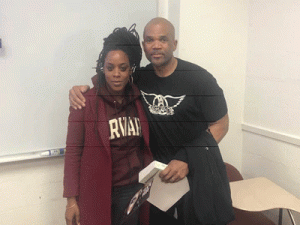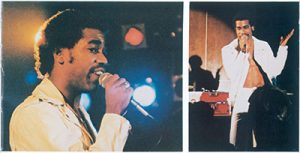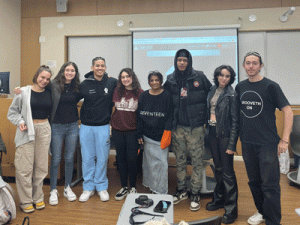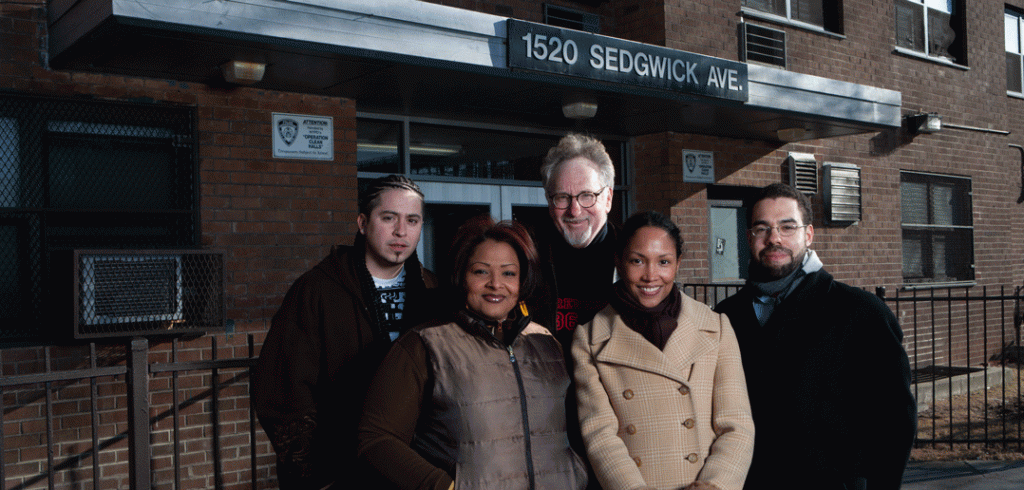
When 1520 Sedgwick Avenue—the Bronx building considered by many to be the place where hip-hop began—had fallen into disrepair, Fordham professor Mark Naison, Ph.D., contributed his research to community organizers who were trying to save it. He also led other Fordham efforts to preserve hip-hop’s past, including the University’s Bronx African American History Project’s (BAAHP) interviews with artists from the early days of the genre, which created an important collection of oral histories from DJs and MCs. Naison also teaches a popular class called From Rock and Roll to Hip-Hop that spans past to present, drawing on artists like Cardi B, Nas, Run DMC, and onetime Fordham “rapper-in-residence” Akua Naru to help students understand the art form and its part in U.S. history.
“I think the lesson is, let’s explore, interrogate, and embrace the cultural creativity of our surrounding areas because it’s unparalleled,” said Mark Naison, Ph.D., director of the BAAHP and professor of African American Studies and History.
The Party That Started It All
It’s the stuff of legend now: On August 11, 1973, teenager Cindy Campbell hosted a back-to-school party in the community room of her building at 1520 Sedgwick Avenue, just blocks from the Cross Bronx Expressway. She charged admission and had her brother Clive, aka DJ Kool Herc—they called him Hercules because he was so big—spin some records. Herc had been practicing on his father’s sound system, jumping just to the hottest percussive grooves—the bits where dancers really got down—and stretching those out by manipulating two copies of the same record. He had two turn tables and a microphone, and played a mix of funk and disco that he blended with the talking-over style he’d grown up hearing in Jamaican dancehall music. While many have pointed out that the art form was developing in other places as well, that party is commonly celebrated as the birth of hip-hop.
Saving 1520 Sedgwick

Fast forward 40 years to the aftermath of the financial crisis of 2008. In a perverse inversion of the redlining that had devastated the Bronx at the time of hip-hop’s birth, 1520 was now laden with debt acquired by Wall Street investors who were failing to maintain the building. Organizers from the Urban Homesteading Assistance Board, a group focused on preserving affordable housing, hoped documenting 1520’s history would help save it. They asked Naison to put his scholarly acumen into determining 1520’s significance. Naison’s research—which later led to a lecture on C-Span and an appearance on PBS’ History Detectives —was among the efforts that helped convince city government to intervene, eventually preserving the building where hip-hop was born as a decent and affordable place to live. And in 2021 the U.S. Congress adopted a resolution acknowledging 1520 Sedgwick as the birthplace of hip-hop.
In Their Own Words
Brian Purnell, FCRH ’00, former research director of the BAAHP and current associate professor of African American Studies at Bowdoin College, said hip-hop culture “exemplifies hallmarks of the long history of Black culture in the U.S.”
“Hip-hop turned the supposed blight of the context its creators lived in into something stunning and fantastic and beautiful—and this is tried and true to Black culture over the centuries,” he said.
In 2003, Fordham formed the BAAHP, at the request of the Bronx County Historical Society, to document the history of Black people in the Bronx. Naison said soon DJs and MCs were calling saying, “Aren’t you going to record our story?”

Over the next several years BAAHP built an archive of interviews with some of the first hip-hop practitioners like Pete DJ Jones and Kurtis Blow, as well as Benjy Melendez —who in 1971 brokered a gang truce allowing the movement between neighborhoods that pollinated the music. The digital recordings have been accessed by scholars the world over, from Nairobi to Singapore, Paris, and Berlin.
WFUV in the House
One of those early hip-hop DJs, Eddie Cheeba, spun both in downtown clubs and uptown parties. In the summer of 1978 he worked at Fordham’s radio station WFUV. He rapped about it at a legendary 1979 party with Melle Mel, Grandmaster Flash, and DJ Hollywood: “Cheeba’s gonna be the winner. I’m mean, I’m bad, I’m cool and smooth, so I know you’ll do it with me. I guess that’s why I ran my game on WFUV. (22-minute mark)”
‘It Was Black People Being Free’
Michael Partis, FCRH ’08, who grew up in the Bronx and has contributed to the BAAHP, said preserving that joy and experimentation palpable in the first years of hip-hop is crucial.
“I think it’s important that the history of hip-hop is documented, because it really shows Black freedom. In this country people of African descent are often tied down by segregation and racism, by respectability that says you can’t be a certain way,” he said. “And hip-hop in its earliest form kind of broke through all that stuff. It was Black people being free.”
While Partis was at Fordham, a student-led Hip-Hop Coalition focused on the politically conscious roots of hip-hop. They brought acts to campus that weren’t mainstream or corporate. “These were street guys who were talking about socioeconomic inequality, and how these working poor communities, Black and Brown working communities, responded to that,” he said. “I thought it was excellent political education for the Fordham kids,” he said.

Today, Naison is helping to continue that education at Fordham.
“I’m not a hip-hop scholar, rather I’m someone who works to have community voices heard,” he said.
The Power—and Reach—of the Music
“When students in my class study hip-hop, there are two things that make the most powerful impression on them: First, the power of the best hip-hop artists, like Tupac Shakur, Lauryn Hill, and Wu-Tang Clan, to tell stories that can touch your heart strings as well as make you think. And second, the truly global impact of hip-hop, which includes dance and visual arts as well as music and is now deeply entrenched in Europe, Africa, and Asia, as well as the Western Hemisphere,” he said.
“Hip-hop was a multicultural arts movement of the most isolated, marginalized, disenfranchised people in society and they created a movement that swept the world.”
–By Eileen Markey, FCRH ’98

